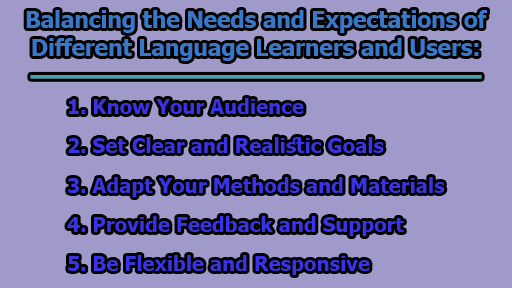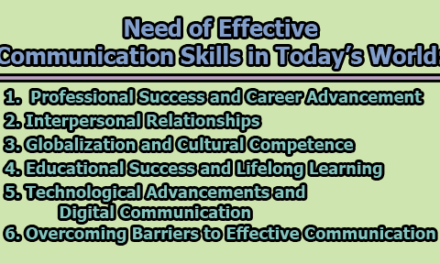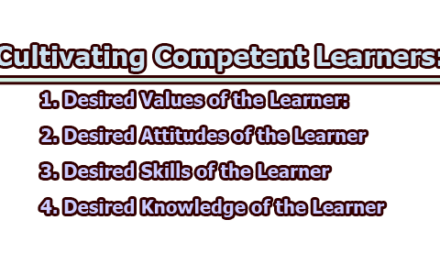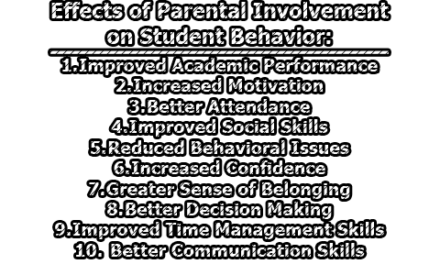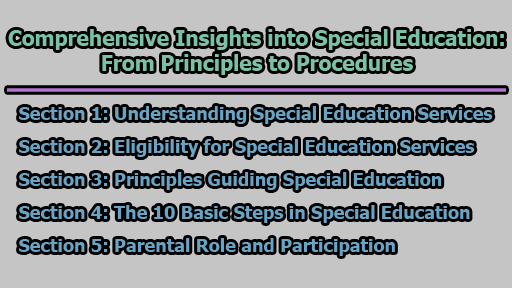Balancing the Needs and Expectations of Different Language Learners and Users:
Language service providers often find themselves catering to a diverse range of language learners and users, each with unique needs, goals, preferences, and challenges. Whether it’s students preparing for exams, professionals communicating with clients, travelers navigating new cultures, or immigrants integrating into new societies, the task of delivering quality and effective language services can be daunting. In the rest of this article, we will explore balancing the needs and expectations of different language learners and users.
1. Know Your Audience: Before embarking on designing or delivering any language service, it is crucial to have a deep understanding of your audience. This involves identifying who they are and what they aim to achieve with your language service. Different scenarios require distinct levels of language proficiency, skills, and content. To accomplish this, consider using methods such as surveys, interviews, tests, or feedback forms to gain insight into your audience’s goals, expectations, and their existing language abilities.
2. Set Clear and Realistic Goals: Once you’ve identified your audience, the next step is to set clear and realistic goals for your language service. Define the level of language proficiency, skills, and content your audience should attain by the end of your service, and establish how progress and outcomes will be measured. Transparency is key here, as you should communicate these goals to your audience, explaining how they align with their needs and expectations. By setting clear objectives, both you and your audience will stay motivated and focused, ultimately leading to greater satisfaction.
3. Adapt Your Methods and Materials: Different language learners and users have varying learning styles, preferences, and backgrounds. To cater to their needs, adapt your methods and materials accordingly. This might involve varying the mode of delivery (online, offline, or blended), format of materials (text, audio, video, or interactive), types of activities (individual, group, or project-based), and topics of interest (culture, business, leisure, etc.). Moreover, the use of different tools and resources, such as dictionaries, apps, or websites, can further enhance the language service’s effectiveness.
4. Provide Feedback and Support: Feedback and support are invaluable components of any language service, as they aid in improving language performance, confidence, and overall satisfaction. Language service providers can offer feedback and support through constructive and timely comments, suggestions, corrections, praise, encouragement, answers to questions, and additional resources or references. It’s equally important to create a supportive and collaborative environment that encourages learners to seek help and interact with peers. Moreover, inviting feedback from the audience about their experiences, preferences, and difficulties can help continuously refine and enhance the language service.
5. Be Flexible and Responsive: In the dynamic world of language learning and usage, flexibility and responsiveness are indispensable. Providers should be prepared to adapt their goals, methods, materials, feedback, and support based on their learners’ progress, feedback, and evolving circumstances. Unexpected challenges, such as technical issues, misunderstandings, or conflicts, will inevitably arise, and it is essential to approach these with an open-minded, adaptable, and respectful attitude. Effective and frequent communication with your audience and a proactive approach to problem-solving are also vital to ensure that the language service remains relevant and effective.
In conclusion, balancing the needs and expectations of different language learners and users can be a complex task, but it is essential for delivering quality and effective language services. By understanding your audience, setting clear goals, adapting your methods and materials, providing feedback and support, and remaining flexible and responsive, you can create a tailored and successful language service that benefits a diverse range of learners and users. This approach not only improves language proficiency but also fosters a positive and engaging learning environment, making the language acquisition journey more enjoyable and rewarding for all involved.

Library Lecturer at Nurul Amin Degree College

